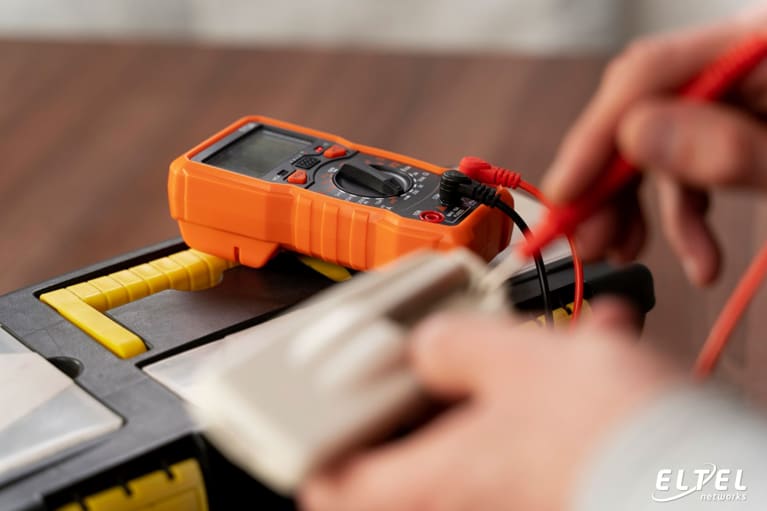
Measurement of insulation resistance
Insulation is intended to protect users against electric shock, as well as to ensure the proper and failure-free operation of the electrical installation. The functioning of electrical devices depends on the condition of insulation. Systematic tests are performed to verify the condition of the insulation. This is an part of control, measurement and operational work. For industrial equipment, the decisive factor is the insulation resistance and the tendency of its value changes. How these types of measurements are performed?
Measurements of changes in insulation resistance
Insulation separating neutral and phase wires allows proper current flow in electrical devices. The change in the insulation resistance value is an important parameter that may indicate the deterioration of the protective layer. The obtained results are archived and compared with the current status, separately for each tested object. In this way, it is possible to detect changes, which results in the need to take actions to prevent failures.
Regular testing of the electrical installation
Insulation resistance measurement should be performed regularly. This usually happens during periodic tests of the electrical installation. They involve checking the current flowing through the insulation. Modern measuring devices are used for this purpose, and the person performing the work should have appropriate qualifications. In practice, for the measurement report to have legal force, it must be signed by an electrician with supervision authorization and operation authorization with a control and measurement scope.
Frequency of measurements
The frequency of insulation resistance measurements is specified in the construction law. In most cases, electrical installations must be checked at least once every five years. In some cases, measurements should be carried out once a year. This applies to places where there is an increased risk of electric shock, for example in workplaces, municipal facilities or other places with high and low voltage installations. Increased requirements may also be related to factors such as increased dust, high humidity or high air temperature.
Insulation resistance testing methods
Insulation resistance can be tested using the point method or as a function of time. The first is based on information collected by using a meter applied to several parts of the insulation. It is simple to do and the work can be completed in a short time. The result should be corrected taking into account the ambient temperature, which has a significant impact on the value of the measured insulation. Checking resistance as a function of time allows for greater accuracy, but the test takes much longer. The ratio of insulation resistance levels tested at different times in places close to the power source is calculated. In this case, the result is precise also because it does not depend on temperature.

Measuring insulation resistance - devices
Device used during work
Insulation resistance measurements should be performed using a megohmmeter, i.e. a device that measures the current through the insulation system under the influence of an applied DC voltage. Such a meter has its own source of test voltage. Insulation resistance can also be measured using a milliammeter, which uses line voltage. In the case of a megohmmeter, the measurement range should be 50 MΩ, 200 MΩ, 1 GΩ or 20 GΩ, and the voltage used for measurement: 250 V, 500 V, 1000 V or 2500 V.
Important European standards
Devices used to measure insulation resistance must meet the requirements specified in the European Union standard marked PN-EN. 61557-10:2013-11. Modern devices have many advantages, among others, they take into account appropriate factors regarding the occurrence of variable temperature during the test. If analog meters are used, the test can only be taken after the measurement has stabilized at a certain level.
Insulation resistance is a parameter that allows you to determine the condition of the insulation of the electrical installation in use. It allows you to effectively prevent dangerous breakdowns and fires. In this way, it is possible to ensure a high level of safety of operating devices connected to the power grid.
